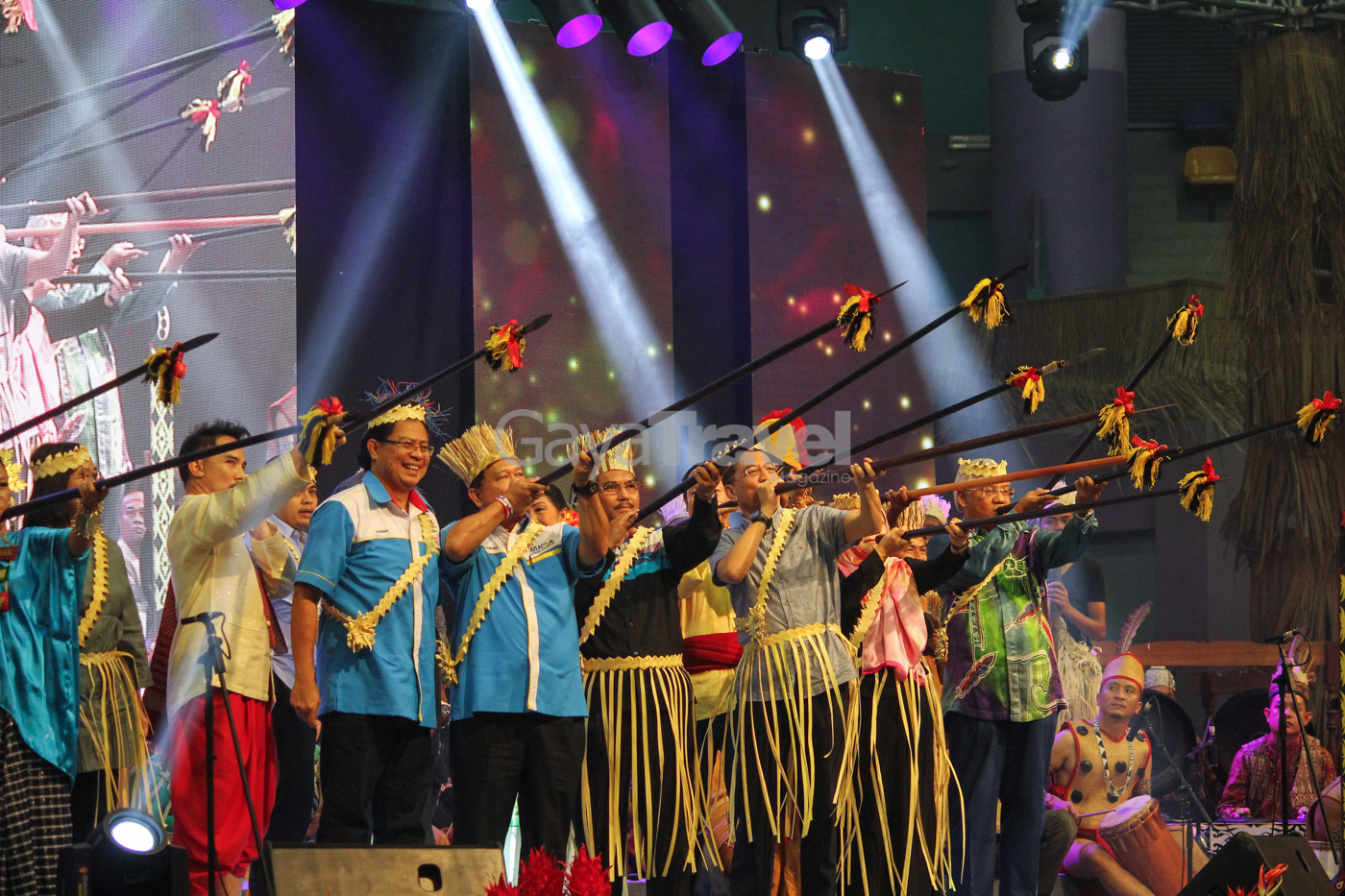Indigenous Arts Festival Faces Funding Crisis Due To Economic Downturn

Table of Contents
The Impact of the Economic Downturn on Indigenous Arts Festival Funding
The current economic downturn has dealt a significant blow to the financial stability of Indigenous Arts Festivals. Funding sources, typically a mix of government grants, corporate sponsorships, and individual donations, have all been negatively impacted. This has created a perfect storm, threatening the very existence of many of these vital cultural events.
-
Reduced government budgets leading to decreased arts funding: Across many nations, government budgets have been slashed, and arts funding is often one of the first areas to suffer cuts. This leaves Indigenous Arts Festivals competing for increasingly scarce resources, often with insufficient funding to cover even basic operational costs. The decrease in government support for Indigenous arts programs directly translates to fewer festivals and less vibrant cultural expressions.
-
Corporate sponsorships drying up due to economic uncertainty: Corporations, often key sponsors of large-scale events, are becoming more cautious in their spending due to economic uncertainty. This reluctance to commit to sponsorships puts further strain on already precarious festival budgets, forcing organizers to make difficult choices about programming and scale. The loss of corporate sponsorship severely limits the ability of festivals to deliver high-quality experiences.
-
Decline in individual donations as people tighten their belts: In times of economic hardship, individuals are less likely to make discretionary donations to charitable causes, including arts festivals. This reduction in individual contributions impacts the smaller, grassroots festivals most severely, those that often rely heavily on community support. Individual contributions are vital for covering unexpected costs and supplementing other funding streams.
-
Increased costs for festival organization: Inflation and rising costs across the board are impacting festival organizers. Venue rentals, artist fees, materials, insurance – all these expenses are increasing, putting further pressure on already stretched budgets. The increased costs make it harder to maintain the quality and scope of programming that are essential to the success of Indigenous Arts Festivals.
The Significance of Indigenous Arts Festivals for Cultural Preservation
Indigenous Arts Festivals are far more than just entertainment; they are vital for the preservation and transmission of Indigenous cultures and traditions. These festivals serve as dynamic hubs for the continuation of cultural heritage across generations.
-
Transmission of traditional skills and knowledge to younger generations: Festivals provide a crucial platform for the transmission of traditional skills and knowledge from elders to younger generations. These skills, often passed down orally and through practical demonstration, include everything from weaving and pottery to storytelling and traditional dance. Without these festivals, these invaluable skills risk being lost forever.
-
Platform for showcasing diverse Indigenous art forms and storytelling: Indigenous Arts Festivals showcase the incredible diversity of Indigenous art forms, from intricate beadwork and carving to powerful storytelling and captivating music. They provide a platform for Indigenous artists to share their work and connect with audiences, promoting understanding and appreciation for their rich heritage. The vibrant artistic expressions enrich the lives of participants and promote cultural understanding.
-
Fostering cultural pride and identity within Indigenous communities: Festivals create spaces for Indigenous communities to celebrate their culture and identity. They offer a sense of belonging and pride, strengthening community bonds and fostering intergenerational connections. The shared cultural experiences build stronger communities and create lasting memories.
-
Contribution to cultural tourism and economic development: Indigenous Arts Festivals also contribute significantly to cultural tourism and economic development in Indigenous communities. They attract visitors, create jobs, and generate revenue that can be reinvested in community initiatives. The economic benefits contribute to the long-term sustainability of both the festivals and the communities they serve.
-
Preservation of endangered languages and cultural practices: Many Indigenous languages and cultural practices are endangered. Indigenous Arts Festivals provide a vital space for the revitalization and preservation of these threatened elements of cultural heritage. The opportunity to actively use and promote these languages and practices helps ensure their continuity for future generations.
Potential Solutions and Calls for Support for Indigenous Arts Festivals
Addressing the Indigenous Arts Festival Funding Crisis requires a multi-pronged approach involving increased funding, innovative fundraising strategies, and impactful policy changes.
-
Increased government funding for arts and culture initiatives, specifically targeting Indigenous arts: Governments need to prioritize funding for Indigenous arts and culture, recognizing their critical role in cultural preservation and community well-being. Dedicated funding streams for Indigenous arts within government budgets are vital.
-
Crowdfunding campaigns and community fundraising events: Harnessing the power of online platforms and community events can help diversify funding sources and engage broader audiences in supporting Indigenous arts. Creative crowdfunding strategies can leverage the passion of supporters for increased contributions.
-
Corporate social responsibility initiatives supporting Indigenous arts: Corporations can play a crucial role in supporting Indigenous Arts Festivals through targeted sponsorships and CSR initiatives. This is not just philanthropic; it's also a valuable opportunity for corporations to demonstrate their commitment to social responsibility and cultural diversity.
-
Increased public awareness and education about the importance of these festivals: Raising public awareness about the value and significance of Indigenous Arts Festivals is crucial to generating broader support. Educational campaigns highlighting the cultural importance of these events are needed.
-
Exploring alternative funding models (e.g., merchandise sales, workshops): Festival organizers can explore creative alternative funding models, such as merchandise sales, workshops, and collaborations with other cultural organizations. This diversification of income streams reduces reliance on a single funding source.
-
Grants and partnerships with non-profit organizations: Seeking grants from foundations and partnerships with non-profit organizations dedicated to supporting Indigenous arts can provide crucial financial and logistical assistance. Collaborations can create more sustainable and resilient support systems.
Government Intervention and Policy Changes
Government intervention is essential to create a sustainable funding environment for Indigenous Arts Festivals. Policies must be designed to encourage both private and public sector support.
-
Tax incentives for corporations sponsoring Indigenous arts festivals: Tax incentives for corporations that sponsor Indigenous Arts Festivals can significantly increase corporate involvement. This financial incentive can encourage increased participation from the private sector.
-
Dedicated funding streams for Indigenous arts within government budgets: The establishment of dedicated funding streams for Indigenous arts within government budgets ensures consistent and reliable funding to support these vital cultural events. This guarantees long-term support for Indigenous cultural programs.
-
Policy changes to streamline grant application processes: Simplifying and streamlining the grant application process for Indigenous Arts Festivals can reduce administrative burdens and make funding more accessible. Removing bureaucratic obstacles improves access to vital financial support.
Conclusion
The Indigenous Arts Festival Funding Crisis is a critical issue that threatens the preservation of invaluable cultural heritage and the economic well-being of Indigenous communities. The economic downturn has exacerbated existing challenges, highlighting the urgent need for collective action. We must act now to safeguard these vital cultural events. Support your local Indigenous Arts Festival through donations, volunteering, or advocating for increased government funding. Let's ensure the vibrant spirit of Indigenous culture continues to thrive for generations to come by addressing this Indigenous Arts Festival Funding Crisis. Learn more about how you can help and find festivals near you by searching "[Your Region] Indigenous Arts Festivals."

Featured Posts
-
 Kawhi Leonard And The Clippers Top Eastern Conferences Cavaliers
May 01, 2025
Kawhi Leonard And The Clippers Top Eastern Conferences Cavaliers
May 01, 2025 -
 Six Nations Frances Convincing Win Previews Ireland Clash
May 01, 2025
Six Nations Frances Convincing Win Previews Ireland Clash
May 01, 2025 -
 Coronation Street Fans Floored By Daisys Stripper Past
May 01, 2025
Coronation Street Fans Floored By Daisys Stripper Past
May 01, 2025 -
 Future Of Microsoft Activision Deal Uncertain After Ftc Appeal
May 01, 2025
Future Of Microsoft Activision Deal Uncertain After Ftc Appeal
May 01, 2025 -
 Targets Controversial Dei Decision Examining The Fallout And Business Implications
May 01, 2025
Targets Controversial Dei Decision Examining The Fallout And Business Implications
May 01, 2025
